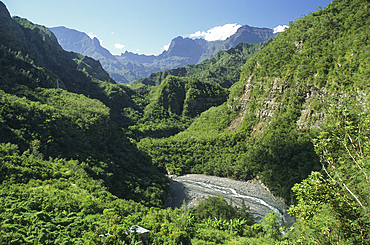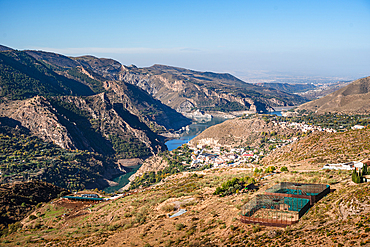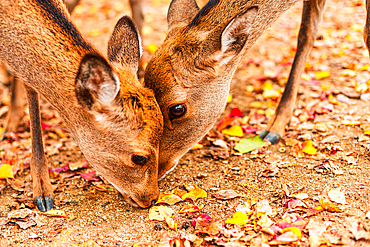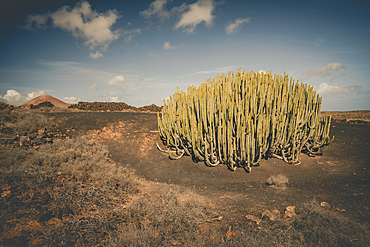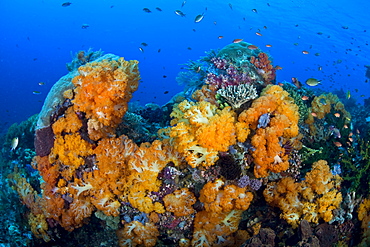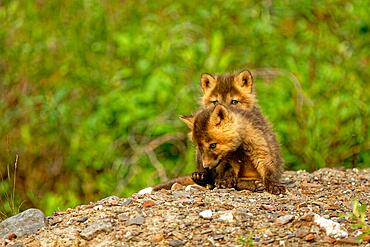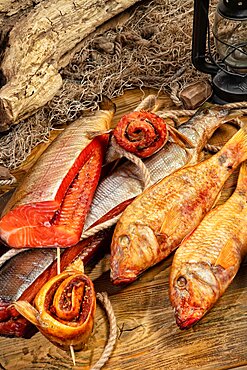Results
10 results found
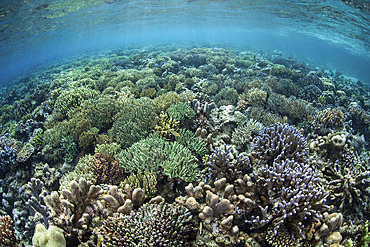
A diverse array of corals grow in Raja Ampat, Indonesia. This beautiful region is known for its spectacular reefs and high marine biodiversity.

An unusual sea star (Linckia laevigata) clings to a diverse reef near the island of Bangka, Indonesia. This beautiful, tropical region is home to an incredible variety of marine life.
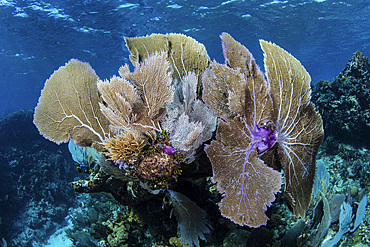
A colorful set of gorgonians, reef-building corals, and other invertebrates grow on a diverse reef in the Caribbean Sea.
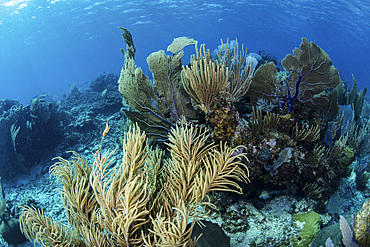
A colorful set of gorgonians, reef-building corals, and other invertebrates grow on a diverse reef in the Caribbean Sea.
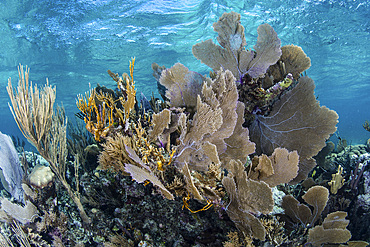
A colorful set of gorgonians, reef-building corals, and other invertebrates grow on a diverse reef in the Caribbean Sea.
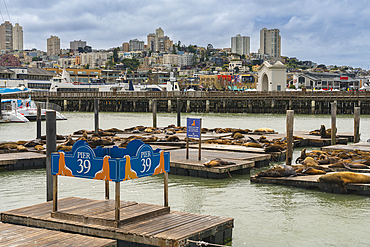
California sea lions relaxing at Pier 39, San Francisco, San Francisco Peninsula, California, United States of America, North America

Northern giant petrels (Macronectes halli) fighting over the scavenging rights to a dead fur seal pup at St. Andrews Bay, South Georgia
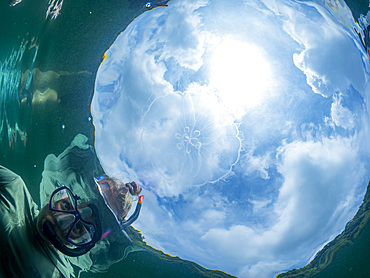
Snorkeler with moon jellyfish (Aurelia sp), in Jellyfish Lake, located on Eil Malk island, Rock Islands, Palau, Micronesia, Pacific

Adult sea otter (Enhydra lutris kenyoni) mother and pup in Inian Pass, Southeastern Alaska, United States of America
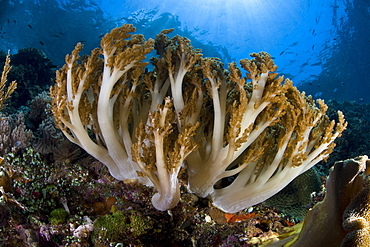
Soft coral colony (Sinularia sp.) Coral colony growing on a diverse and healthy tropical reef. Komodo, Indonesia, Pacific Ocean.
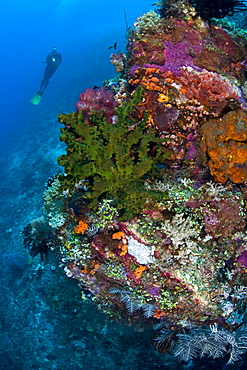
Diver looks at diverse coral reef including a green cup coral colony (Tubastrea micrantha) Komodo, Indonesia, Pacific Ocean.
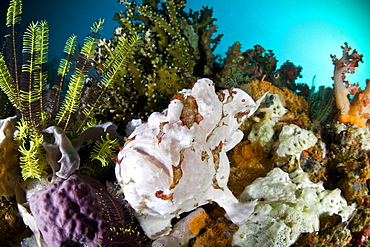
Giant frogfish (Antennarius commersoni) Adult fish blends into a diverse coral reef. Cannibal Rock, Horseshoe Bay, Rinca Island, near Komodo, Indonesia.
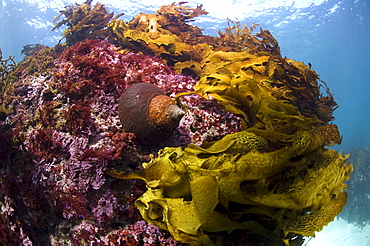
Jourdan's turban (turbo jourdani) large gastropod shell, reddish-brown, Rottnest Island reef, wild, day, marine protected area, free-diving off, cool temperate waters of Western Australia. MORE INFO: Marine plant common kelp, a dominant feature of the underwater landscape. Protected areas are covered in lush growth of diverse algae, also red algea are here.
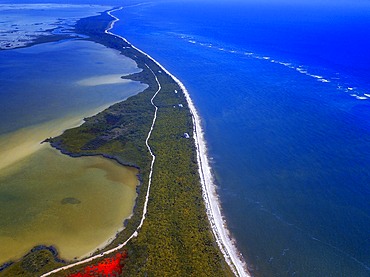
Aerial view of Punta Allen Sian Ka'an Reserve, Yucatan Peninsula, Mexico. Red lagoon near Boca Paila Bridge.
In the language of the Mayan peoples who once inhabited this region, Sian Ka'an means Origin of the Sky. Located on the east coast of the Yucatán peninsula, this biosphere reserve contains tropical forests, mangroves and marshes, as well as a large marine section intersected by a barrier reef. It provides a habitat for a remarkably rich flora and a fauna comprising more than 300 species of birds, as well as a large number of the region's characteristic terrestrial vertebrates, which cohabit in the diverse environment formed by its complex hydrological system.
Along its roughly 120 kilometres of coastline, the property covers over 400,000 hectares of land ranging from sea level to only ten m.a.s.l. The property boasts diverse tropical forests, palm savannah, one of the most pristine wetlands in the region, lagoons, extensive mangrove stands, as well as sandy beaches and dunes. The 120,000 hectares of marine area protect a valuable part of the Mesoamerican Barrier Reef and seagrass beds in the shallow bays. The lush green of the forests and the many shades of blue of the lagoons and the Caribbean Sea under a wide sky offer fascinating visual impressions.
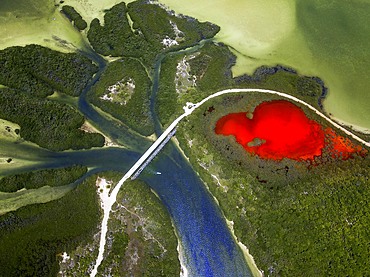
Aerial view of Punta Allen Sian Ka'an Reserve, Yucatan Peninsula, Mexico. Red lagoon near Boca Paila Bridge.
In the language of the Mayan peoples who once inhabited this region, Sian Ka'an means Origin of the Sky. Located on the east coast of the Yucatán peninsula, this biosphere reserve contains tropical forests, mangroves and marshes, as well as a large marine section intersected by a barrier reef. It provides a habitat for a remarkably rich flora and a fauna comprising more than 300 species of birds, as well as a large number of the region's characteristic terrestrial vertebrates, which cohabit in the diverse environment formed by its complex hydrological system.
Along its roughly 120 kilometres of coastline, the property covers over 400,000 hectares of land ranging from sea level to only ten m.a.s.l. The property boasts diverse tropical forests, palm savannah, one of the most pristine wetlands in the region, lagoons, extensive mangrove stands, as well as sandy beaches and dunes. The 120,000 hectares of marine area protect a valuable part of the Mesoamerican Barrier Reef and seagrass beds in the shallow bays. The lush green of the forests and the many shades of blue of the lagoons and the Caribbean Sea under a wide sky offer fascinating visual impressions.
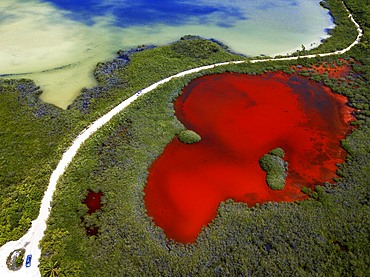
Aerial view of Punta Allen Sian Ka'an Reserve, Yucatan Peninsula, Mexico. Red lagoon near Boca Paila Bridge.
In the language of the Mayan peoples who once inhabited this region, Sian Ka'an means Origin of the Sky. Located on the east coast of the Yucatán peninsula, this biosphere reserve contains tropical forests, mangroves and marshes, as well as a large marine section intersected by a barrier reef. It provides a habitat for a remarkably rich flora and a fauna comprising more than 300 species of birds, as well as a large number of the region's characteristic terrestrial vertebrates, which cohabit in the diverse environment formed by its complex hydrological system.
Along its roughly 120 kilometres of coastline, the property covers over 400,000 hectares of land ranging from sea level to only ten m.a.s.l. The property boasts diverse tropical forests, palm savannah, one of the most pristine wetlands in the region, lagoons, extensive mangrove stands, as well as sandy beaches and dunes. The 120,000 hectares of marine area protect a valuable part of the Mesoamerican Barrier Reef and seagrass beds in the shallow bays. The lush green of the forests and the many shades of blue of the lagoons and the Caribbean Sea under a wide sky offer fascinating visual impressions.
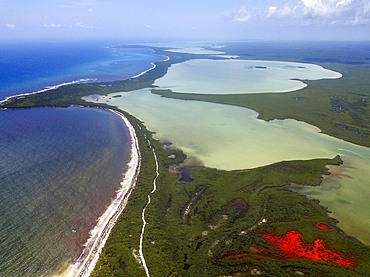
Aerial view of Punta Allen Sian Ka'an Reserve, Yucatan Peninsula, Mexico. Red lagoon near Boca Paila Bridge.
In the language of the Mayan peoples who once inhabited this region, Sian Ka'an means Origin of the Sky. Located on the east coast of the Yucatán peninsula, this biosphere reserve contains tropical forests, mangroves and marshes, as well as a large marine section intersected by a barrier reef. It provides a habitat for a remarkably rich flora and a fauna comprising more than 300 species of birds, as well as a large number of the region's characteristic terrestrial vertebrates, which cohabit in the diverse environment formed by its complex hydrological system.
Along its roughly 120 kilometres of coastline, the property covers over 400,000 hectares of land ranging from sea level to only ten m.a.s.l. The property boasts diverse tropical forests, palm savannah, one of the most pristine wetlands in the region, lagoons, extensive mangrove stands, as well as sandy beaches and dunes. The 120,000 hectares of marine area protect a valuable part of the Mesoamerican Barrier Reef and seagrass beds in the shallow bays. The lush green of the forests and the many shades of blue of the lagoons and the Caribbean Sea under a wide sky offer fascinating visual impressions.

Palms and old pier in Punta Allen Sian Ka'an Reserve, Yucatan Peninsula, Mexico.
In the language of the Mayan peoples who once inhabited this region, Sian Ka'an means Origin of the Sky. Located on the east coast of the Yucatán peninsula, this biosphere reserve contains tropical forests, mangroves and marshes, as well as a large marine section intersected by a barrier reef. It provides a habitat for a remarkably rich flora and a fauna comprising more than 300 species of birds, as well as a large number of the region's characteristic terrestrial vertebrates, which cohabit in the diverse environment formed by its complex hydrological system.
Along its roughly 120 kilometres of coastline, the property covers over 400,000 hectares of land ranging from sea level to only ten m.a.s.l. The property boasts diverse tropical forests, palm savannah, one of the most pristine wetlands in the region, lagoons, extensive mangrove stands, as well as sandy beaches and dunes. The 120,000 hectares of marine area protect a valuable part of the Mesoamerican Barrier Reef and seagrass beds in the shallow bays. The lush green of the forests and the many shades of blue of the lagoons and the Caribbean Sea under a wide sky offer fascinating visual impressions.
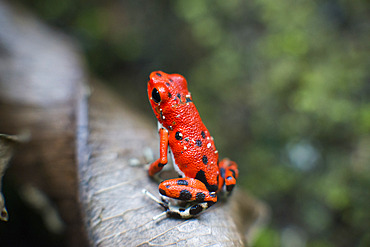
Strawberry Poison Frog (Dendrobates pumilio), adult, Bastimentos National Park, Bocas del Toro, Panama. The strawberry poison frog or strawberry poison-dart frog (Oophaga pumilio or Dendrobates pumilio) is a species of small amphibian poison dart frog found in Central America. It is common throughout its range, which extends from eastern central Nicaragua through Costa Rica and northwestern Panama. The species is often found in humid lowlands and premontane forest, but large populations are also found in disturbed areas such as plantations. The strawberry poison frog is perhaps most famous for its widespread variation in coloration, comprising approximately 15���30 color morphs, most of which are presumed to be true-breeding. O. pumilio, while not the most poisonous of the dendrobatids, is the most toxic member of its genus. The species is most diverse in Panama with varieties in vivid shades of all red, orange, blue, yellow or green, green and yellow, white with red, orange or black and spotted varieties. The most colorful mix is found in Isla Bastimentos Marine National Park though not all in one place. Colors vary by location. A beach on the north side of the island is named after the species. Two of Southern Explorations' Panama tours visit red frog habitat. Both the eight-day Panama Adventure trip and eleven-day Panama Highlights trip spend time in Isla Bastimentos Marine National Park and the former also goes to Red Frog Beach.
The red frog is not as poisonous as some of its cousins and is not a threat to humans. It subsists on a diet of ants that dine on poisonous plants, providing the red frog its protective skin toxin. Males attract females with a loud quick chirp. To hear the distinctive sound before you depart on your Panama tours, go to the University of Michigan Museum's biodiversity website (www.animaldiversity.ummz.umich.edu.) After birth, the tadpoles climb aboard the mother who deposits them in different protected areas where she retu
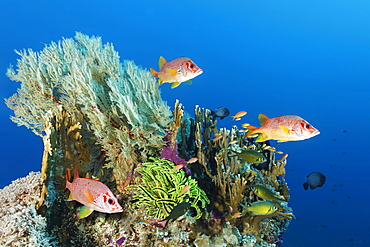
Coral block with different stony corals (Scleractinia), Melithaea gorgonian (Melithaea sp.), Feather star, yellow (Crinoidea) and Sabre squirrelfish (Sargocentron spiniferum), three, Great Barrier Reef, Coral Sea, Pacific, Australia, Oceania
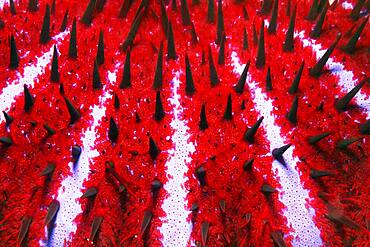
Detail of toxic Crown-of-thorns starfish (Acanthaster planci), spines, crown of thorns, Pacific, Great Barrier Reef, UNESCO World Heritage, Australia, Oceania

Portrait of diverse group of cheerful young people having fun and raising arms while standing through the city
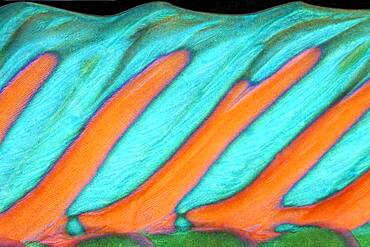
Detail of dorsal fin, parrot fish (Scarus), Pacific, Great Barrier Reef, UNESCO World Heritage, Australia, Oceania
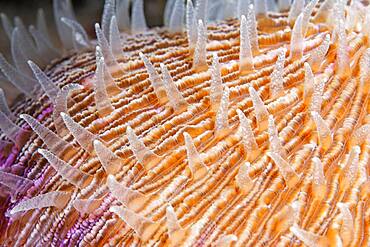
Polyps of a mushroom coral (Fungiidae) Pacific, Great Barrier Reef, UNESCO World Heritage, Australia, Oceania
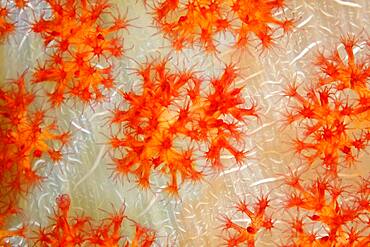
Open coral polyps on the trunk of a soft coral (Dendronephthya), coral, Pacific, Great Barrier Reef, UNESCO World Heritage, Australia, Oceania
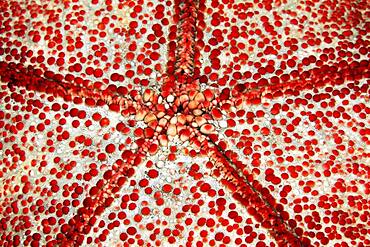
Underside with mouth of spiny cushion star (Culcita novaeguineae), Detail, Starfish, Pacific, Great Barrier Reef, Australia, Oceania
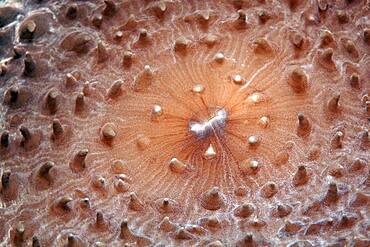
Slice anemone, Giant Cup Mushroom (Amplexidiscus fenestrafer), detail with mouth, Pacific, Great Barrier Reef, UNESCO World Heritage, Australia, Oceania
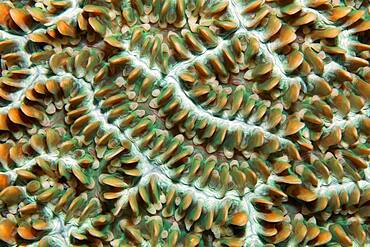
Colony of coral polyps in brain corallae (Physogyra lichtensteini), Pacific, Great Barrier Reef, UNESCO World Heritage Site, Australia, Oceania
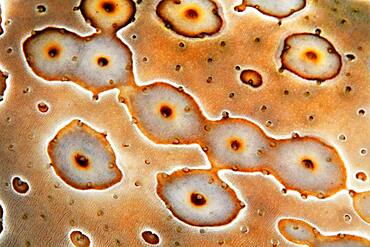
Detail of Eye patch sea cucumber (Bohadschia argus), Pacific, Great Barrier Reef, Australia, Oceania
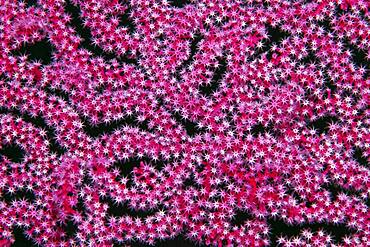
Open coral polyps on Mopsella sea fan (Mopsella) Pacific, Great Barrier Reef, UNESCO World Natural Heritage, Australia, Oceania
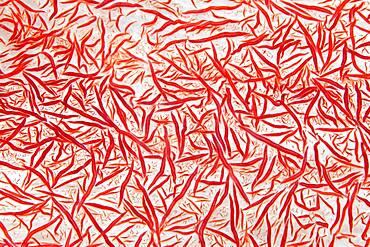
Limestone skeleton of the Klunzinger soft coral (Dendronephthya klunzingeri), Pacific, Great Barrier Reef, UNESCO World Heritage, Australia, Oceania

Festival of eagle hunters in Olgii Province, about 20 km from the provincial capital, where different methods of hunting are demonstrated and evaluated, as well as equestrian games and riding new mounts, Kisil Char, Olgii, Mongolia, Asia
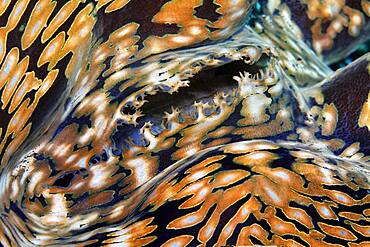
Syphon of giant clam (Tridacna gigas), Clam meat, detail, pacifica, Great Barrier Reef, UNESCO World Heritage, Australia, Oceania
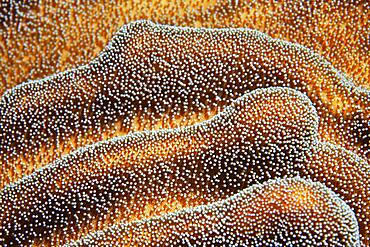
Soft coral, leather coral (Lobophytum) with semi-enclosed polyps, detail, Pacific, Great Barrier Reef, UNESCO World Heritage, Australia, Oceania
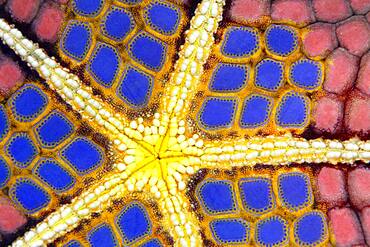
Graphic structure on underside of Red Pillow Starfish (Halithyle regularis), detail, Pacific, Great Barrier Reef, UNESCO World Heritage, Australia, Oceania
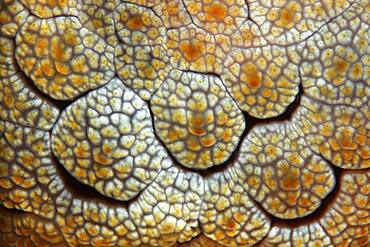
Detail of Forsskal's Pleurobranch (Pleurobranchus forskalii), Backshielded Snail, Nudibranch, Detail, Pacific, Great Barrier Reef, UNESCO World Heritage, Australia, Oceania
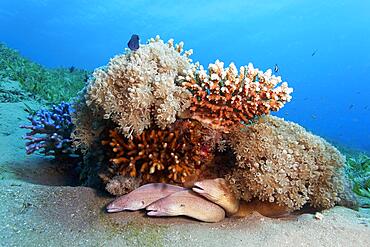
Geometric Moray (Gymnothorax griseus), also spotted moray eel, three, patch reef with soft corals (Xenia) and various stony corals, sandy bottom, seagrass bed, Red Sea, Aqaba, Kingdom of Jordan
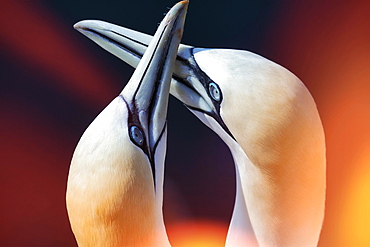
Northern gannet (Morus bassanus), pair courtships, coloured light reflections, Helgoland Island, Schleswig-Holstein, Germany, Europe

Northern northern gannet (Morus bassanus), confrontation between different animals on the breeding rock, Helgoland, Schleswig-Holstein, Germany, Europe
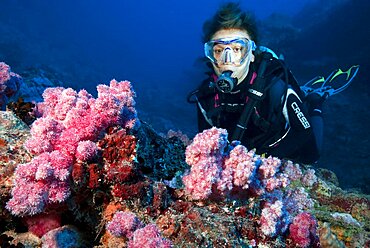
Diver looking at pink coloured soft corals (Dendronephthya), Pacific Ocean, Caroline Islands, Yap, Micronesia, Oceania
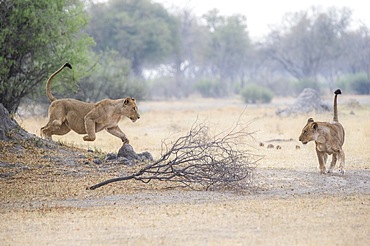
Lioness attacks a second lioness from left to right jumping. (Panthera) leo. Okavango Delta, Botswana, Africa

Western yellow wagtail (Motacilla flava), in a flower meadow with Corn Poppy (Papaver rhoeas), Poppy family (Papaveraceae), Otterswang, Pfullendorf, Linzgau, Baden-Wuerttemberg, Germany, Europe

Western yellow wagtail (Motacilla flava), in a flower meadow with Corn Poppy (Papaver rhoeas), Poppy family (Papaveraceae), Otterswang, Pfullendorf, Linzgau, Baden-Wuerttemberg, Germany, Europe

Western yellow wagtail (Motacilla flava), in a flower meadow with Corn Poppy (Papaver rhoeas), Poppy family (Papaveraceae), Otterswang, Pfullendorf, Linzgau, Baden-Wuerttemberg, Germany, Europe

